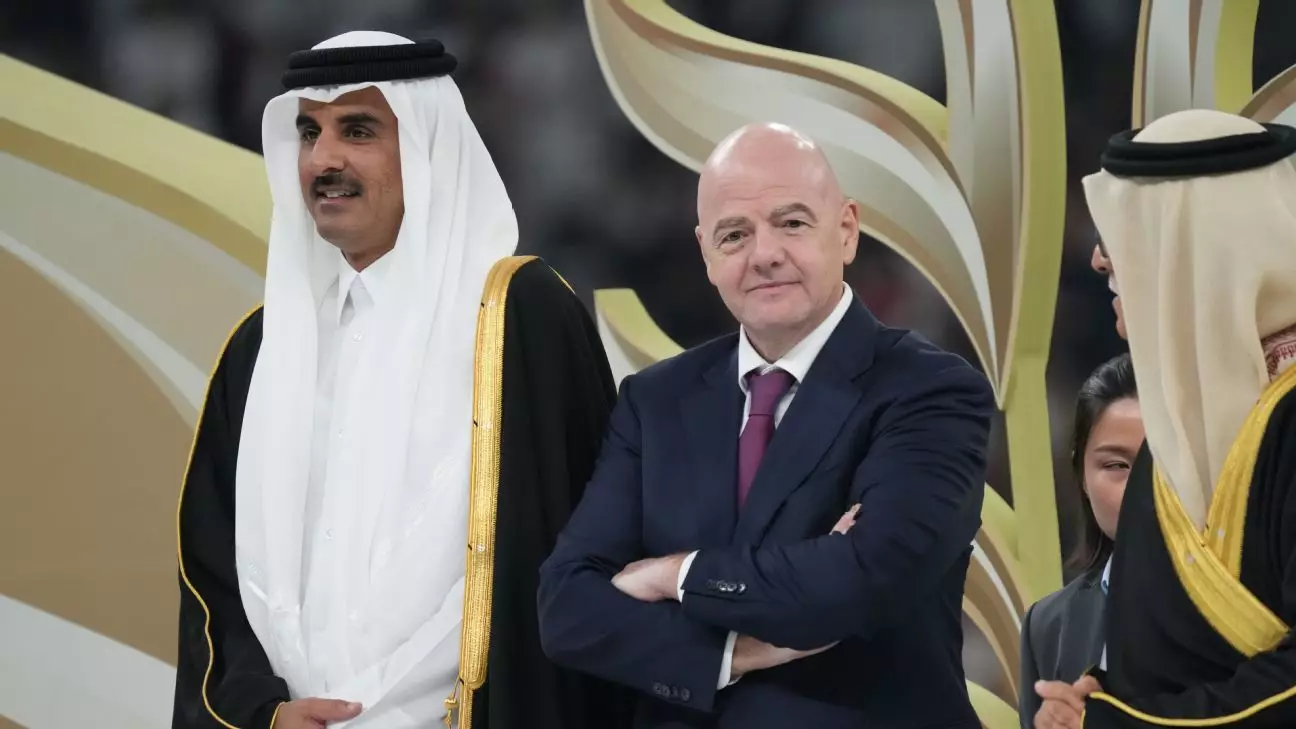The recent FIFA financial report released last year revealed a shocking increase in FIFA President Gianni Infantino’s base salary by 33%, making his total pay package exceed $4.67 million. This substantial raise brought his pre-tax base salary to more than $2.78 million, with an annual bonus of $1.87 million. These numbers are staggering, especially when compared to the previous FIFA President, Sepp Blatter, who had a contracted bonus of $12 million in addition to a $3 million basic salary and annual bonuses.
Interestingly, Infantino’s increased salary is not the only controversial aspect of his leadership. Despite recommendations for a more figurehead role, he continues to operate as an executive leader, overseeing FIFA’s operations with authority. He split his time between Qatar, where he oversaw preparations for the 2022 World Cup, and Florida, where FIFA has offices in Coral Gables. The choice of Florida is particularly strategic as the state does not have a state income tax, allowing Infantino to maximize his earnings.
Looking ahead, FIFA has budgeted for total revenue of $11 billion in the financial cycle from 2023 through 2026. This includes revenue from Saudi sponsors such as Aramco, alongside longtime partners like Coca-Cola, Adidas, and Visa. The upcoming 2026 World Cup is expected to be the first with 48 teams and include 104 games, signaling a significant growth in revenue potential. Additionally, FIFA recently introduced the 32-team men’s Club World Cup, set to launch next year in the U.S., further diversifying its income streams.
Management Pay and Governance
While Infantino enjoys a luxurious salary package, FIFA has made efforts to disclose details of management pay, as recommended by a reform panel established after corruption scandals in 2015. The compensation panel, chaired by retired judge Mukul Mudgal from India, oversees governance and compliance at FIFA. Notably, payments to the 37-member FIFA Council remained the same, with the president receiving a net amount of $300,000 plus expenses. Similarly, the president of UEFA, Aleksander Čeferin, was compensated with a gross salary of almost $3.26 million.
Commercial Income and Financial Reserves
FIFA’s commercial income is heavily reliant on the men’s World Cup, which traditionally generates substantial revenue. However, the recent financial report highlighted revenue diversification efforts, particularly with the success of the Women’s World Cup in 2023. The tournament generated $1.17 billion in revenue, with significant contributions from marketing deals and broadcasting rights. FIFA also emphasized its investments in football development, with each of its 211 member federations receiving up to $8 million every four years.
FIFA’s financial report paints a complex picture of the organization’s financial health and governance structure. While revenue projections are optimistic, the controversy surrounding management pay, particularly Infantino’s salary, raises questions about transparency and accountability within the organization. As FIFA continues to navigate commercial partnerships and expand its tournament offerings, it must prioritize ethical governance and responsible financial management to ensure the long-term sustainability of the sport.

Leave a Reply